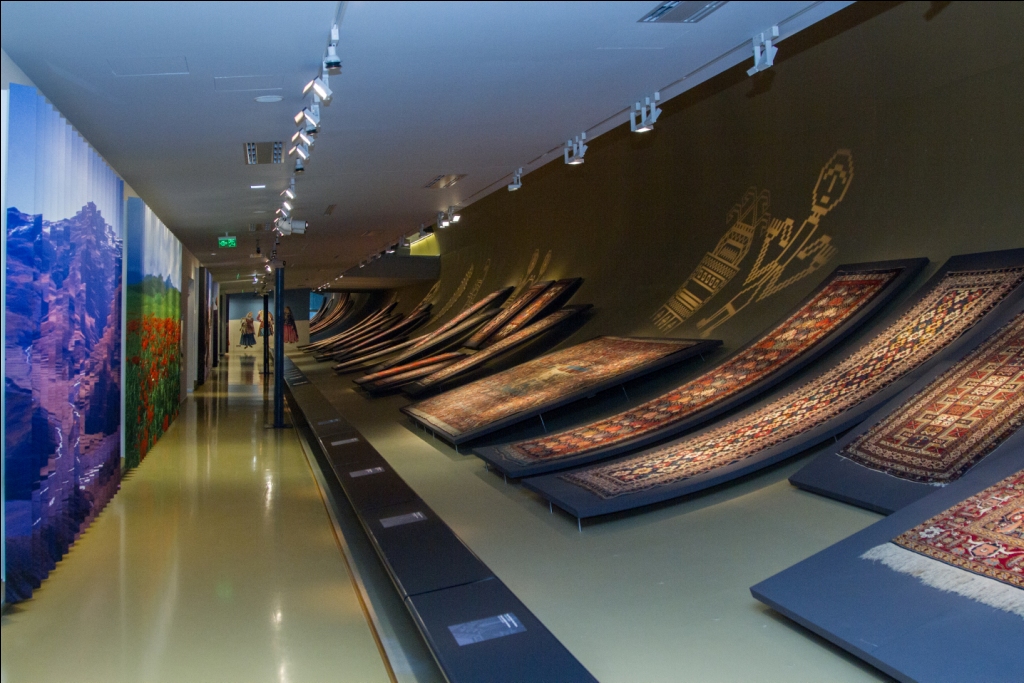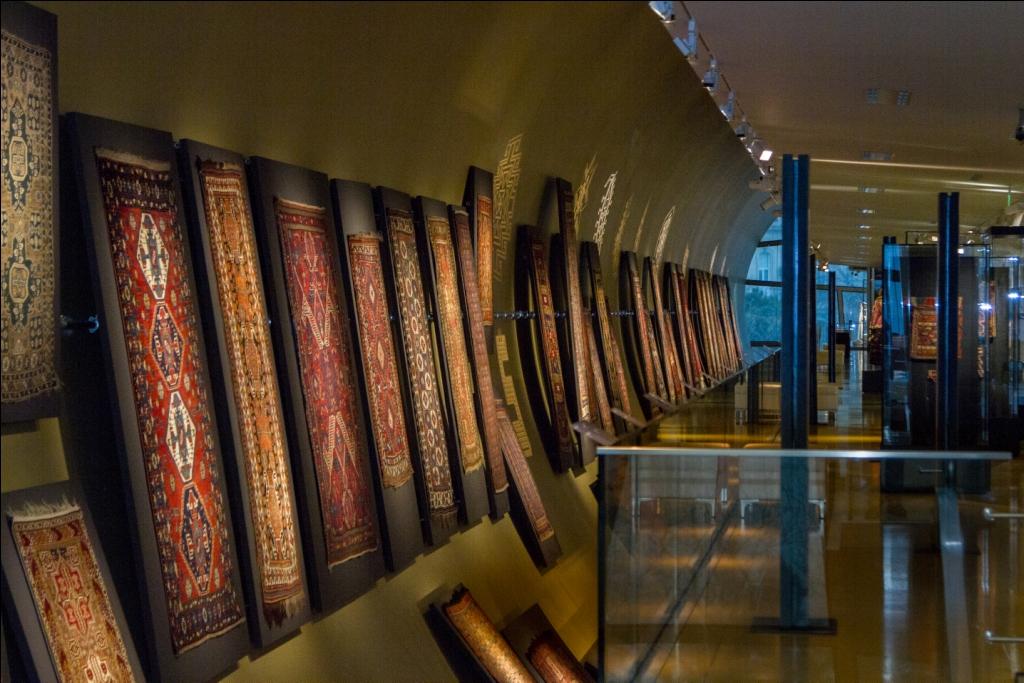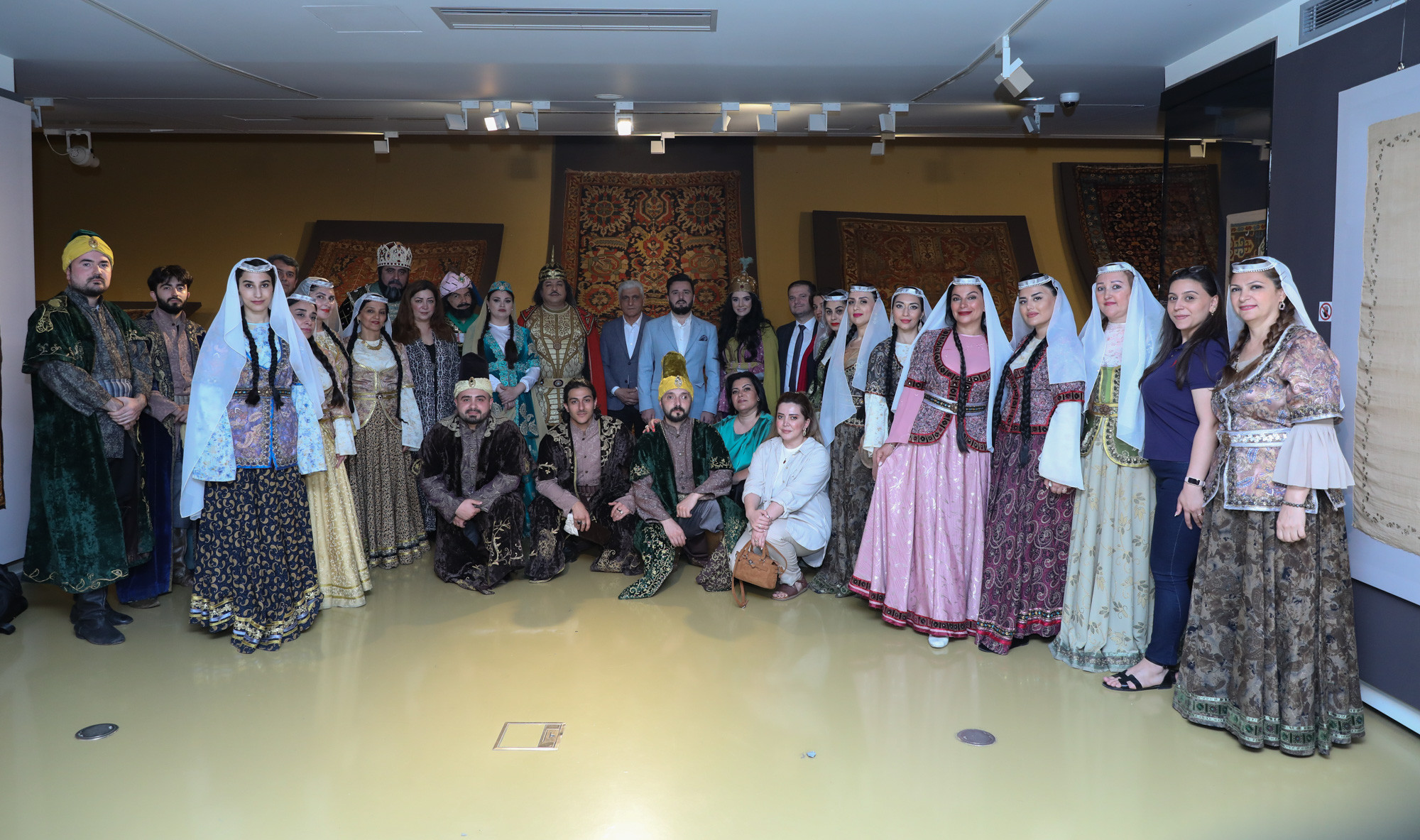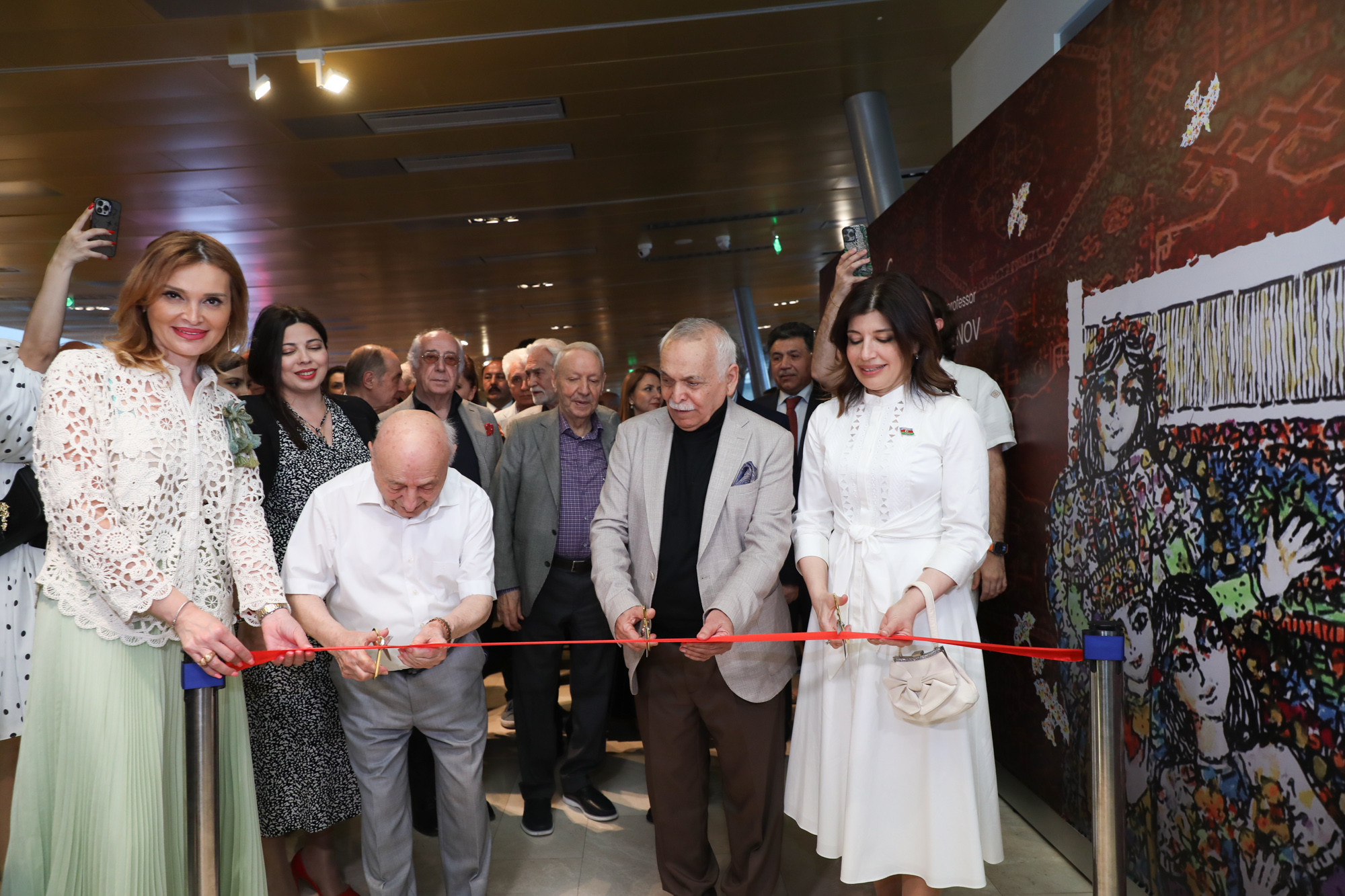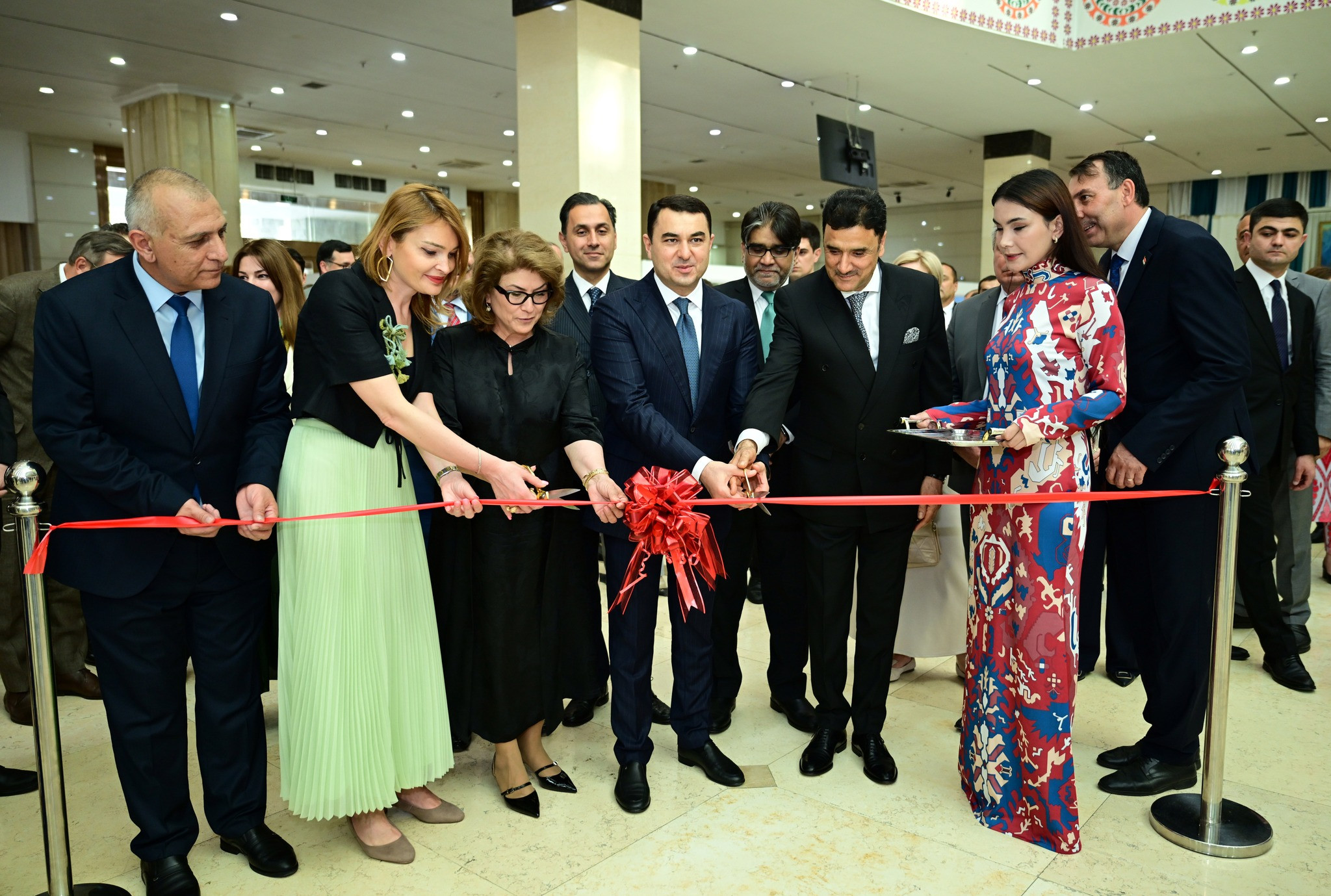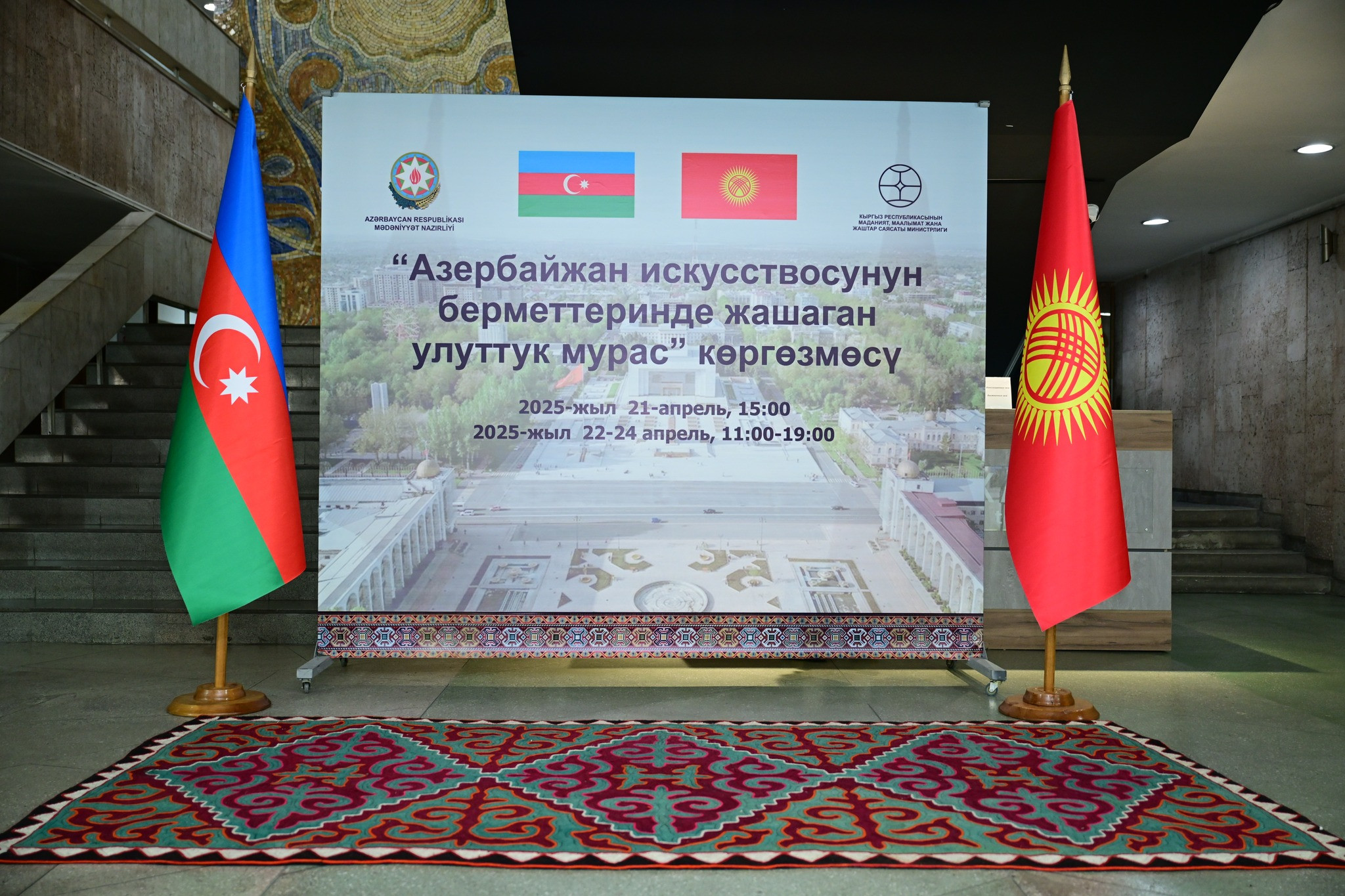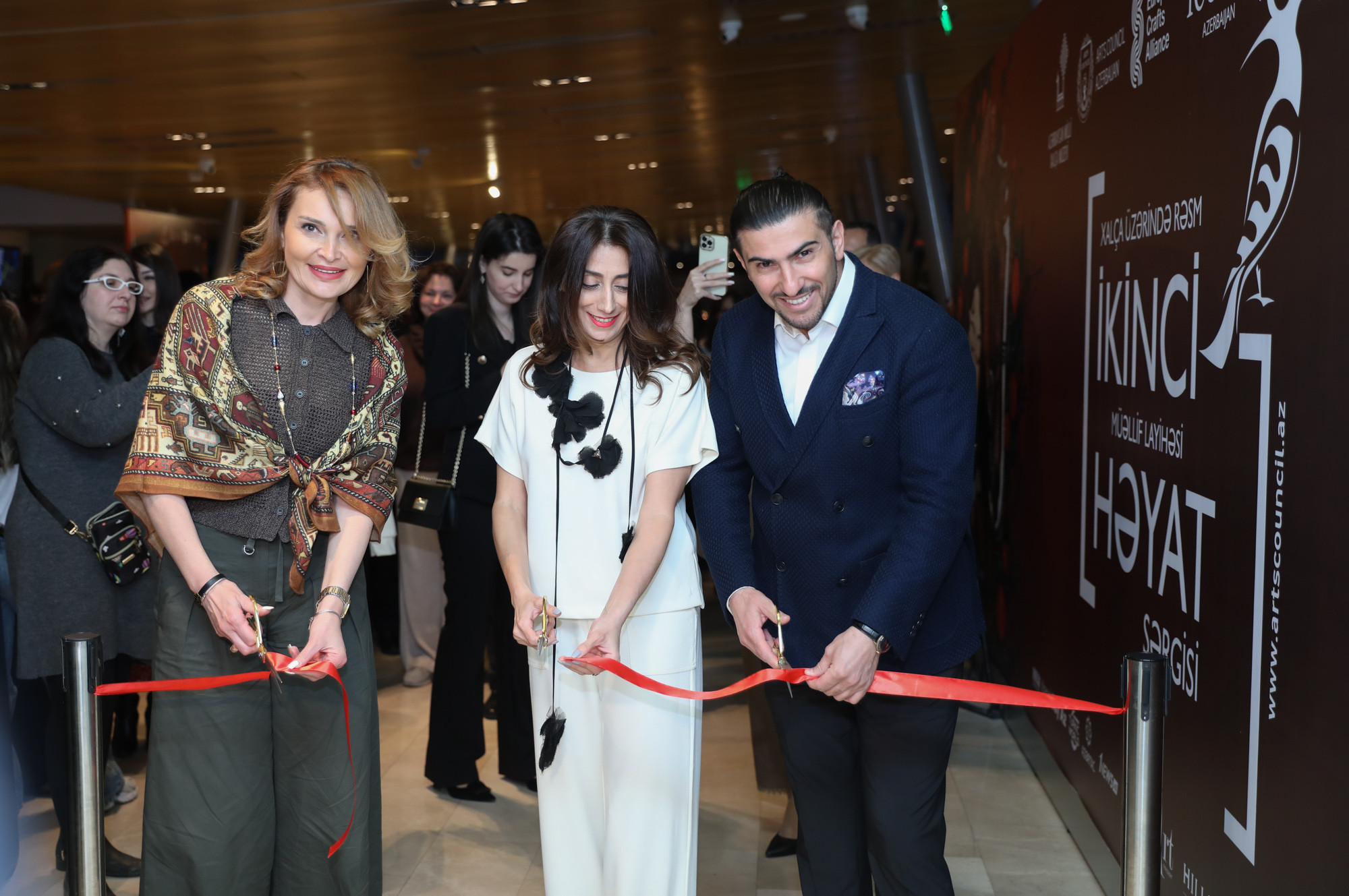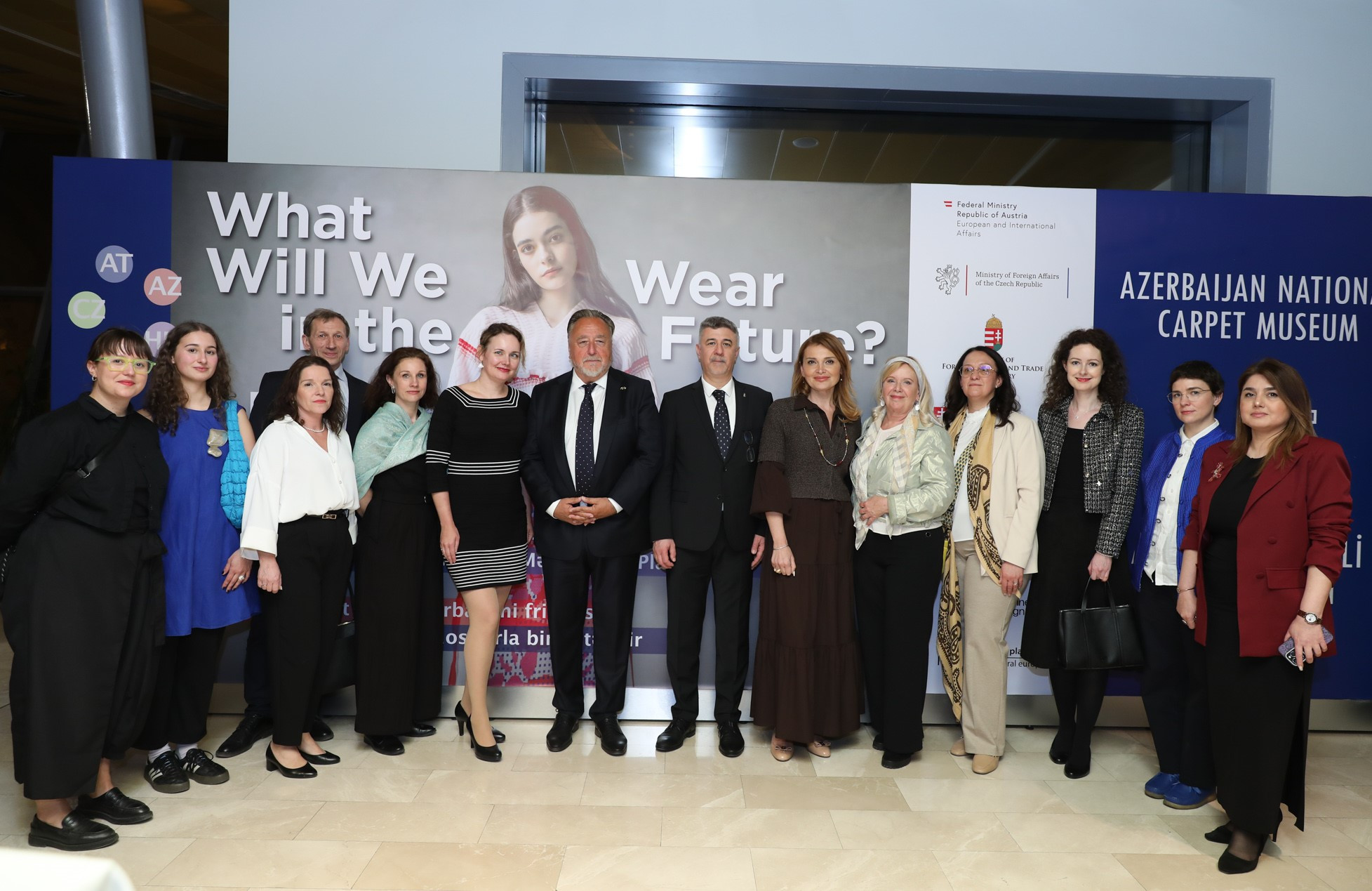2nd Floor of the Exposition
The 2nd floor of the exposition presents pile carpets. They are divided into groups according to the classfication system developed by Latif Karimov, the scientist and artist of carpets. Within the exposition you can see Guba, Shirvan, Baku, Ganja, Gazakh, Karabakh, and Tabriz carpet weaving groups.
In 2013, the carpets Ajdahali (“Dragon”) and Salyan Khilasi, which are exhibited here, were donated to the museum by a bequest of American collector Grover Schiltz. The 17th-century carpet Ajdahali is the most ancient and unique carpet in the museum's collection.
Karabakh’s grand carpet sets, Dest-khali gebe, are designed to emphasize the high status of the houses they adorned. Tabriz carpets are known for their unique scenic motifs, each of which tells a story.
Here visitors can also see examples of traditional costumes typical of Azerbaijan’s different regions, exquisite embroidery, and hammered copper products widely used in everyday life.
The motifs commonly used in Azerbaijani folk art have precise meanings, and the exposition allows us to understand them. It demonstrates the significance of ornaments such as a buta, dragon, or tree of life; the origin and semantics of different shapes of crosses; and the meanings of Islamic symbols. A rich variety of ornamentation styles are presented in accordance with their geographical distribution.
One of the most exciting and memorable parts of the exposition is the traditional interior of the house of a rich inhabitant of Shusha. The room was recreated from the notes and drawings of European and Russian travelers. The examples of carpets and other types of old crafts form an integral part of the house decoration.
Modern digital technologies are widely used on this floor. They extend the museum’s ability to display carpets of various types, groups, and regions, including carpets from the collections of many museums around the world. On the monitor, one can see manufacturing process of shebeke (window) and kelaghayi (silk shawl).
